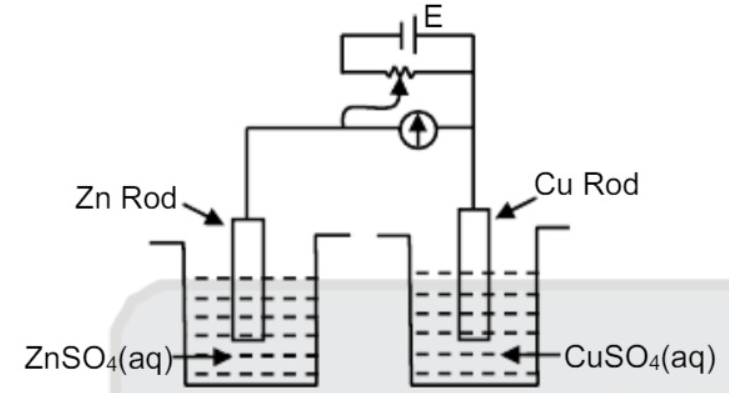Which of the following statements is correct? If E∘Cu2+∣Cu=0.34V,E∘Sn(+2)∣Sn=−0.136andE∘H+∣H2=−0.0V
Cu+ ions can be reduced by H2(g)
Cu can be oxidized by H+
Sn2+ ions can be reduced by H2
Sn is oxidized by H+
The correct Answer is:A, D
Step by step video, text & image solution for Which of the following statements is correct? If E_(Cu^(2+)|Cu)^(@)=0.34V , E_(Sn(+2)|Sn)^(@)=-0.136"and"E_(H^+|H_2)^(@)=-0.0V by Chemistry experts to help you in doubts & scoring excellent marks in Class 12 exams.
Updated on:21/07/2023Topper's Solved these Questions
- ELECTRO CHEMISTRYBook:NARAYNAChapter: ELECTRO CHEMISTRYExercise:SUBJECTIVE QUESTIONS
Explore 48 Videos
- ELECTRO CHEMISTRYBook:NARAYNAChapter: ELECTRO CHEMISTRYExercise:LEVEL-V
Explore 67 Videos
- 15TH GROUP ELEMENTSBook:NARAYNAChapter:15TH GROUP ELEMENTSExercise:EXERCISE - 4 (NCERT EXEMPLERS/HOTs)
Explore 27 Videos
Similar Questions
Knowledge Check
Which of the following statements is correct? If E∘Cu2+∣Cu=0.34VandE∘H+∣H2=−0.0V
ACu2+ ions can be reduced by H2(g)Bcu can be oxidisedCSn2+ ions can be reduced by H2DSn can be oxidized by Cu2+A solution is one molar in each of NaCl , CdCl2,ZnCl2andPbCl2 . To this , tin metal is added . Which of the following is true ? Given :
E∘Pb2+∣P=−0.126V,ESn2+∣Sn=−0.136VE∘Cd2+∣Cd=−0.40V,E∘Zn2+∣Zn=−0.763VE∘Na+∣Na=−2.71VASn can reduce Na+ to NaBSn can reduce Zn2+ to ZnCSn can reduce Cd2+ to CdDSn can reduce Pb2+ to Pb .E∘Cu2+/Cu=0.34V
E∘Cu+/Cu=0.522V
E∘Cu2+/Cu+=A0.158B-0.158C1.182D-0.182
A solution is 1 molar in each of NaCl, CdCl2,ZnCl2andPbCl2. To this Sn metal is added, which of the following is true?
Given E∘(Pb2+/Pb=−0.126V)
E∘Sn2+/Sn=−0.136V,E∘Cd2+/Cd=−0.40V
E∘Zn2+/Zn=−0.763V,E∘Na+/Na=−2.71V
View SolutionWhich is/are correct among the following? Given the half cell EMFs
E∘Cu2+/Cu=0.337V,E∘Cu+∣Cu=0.521V
View SolutionFor the given cell arrangement identify incorrect statement
given E∘_(Cu2+/Cu) = 0.34V &E∘_(Zn2+/Zn)=−0.76V
View SolutionWhich of the following metals could be used successfully to galvanize iron?
[Given:
E∘Ni+2/Ni=−0.23V E_(Cu^(+2)//Cu)^(@) = -0.34V<br>E_(Sn^(+2)//Sn)^(@) = -0.14VE_(Mn^(+2)//Mn)^(@) = -1.18V<br>E_(Fe^(+2)//Fe)^(@) = -0.41V
View SolutionIf a small Cu rod is placed in an aqueous solution of ferrous salt, then which of the following will be observed? (E0Cu2−Cu=−0.34V,E0Fe2+Fe=−0.44V)
View Solution

